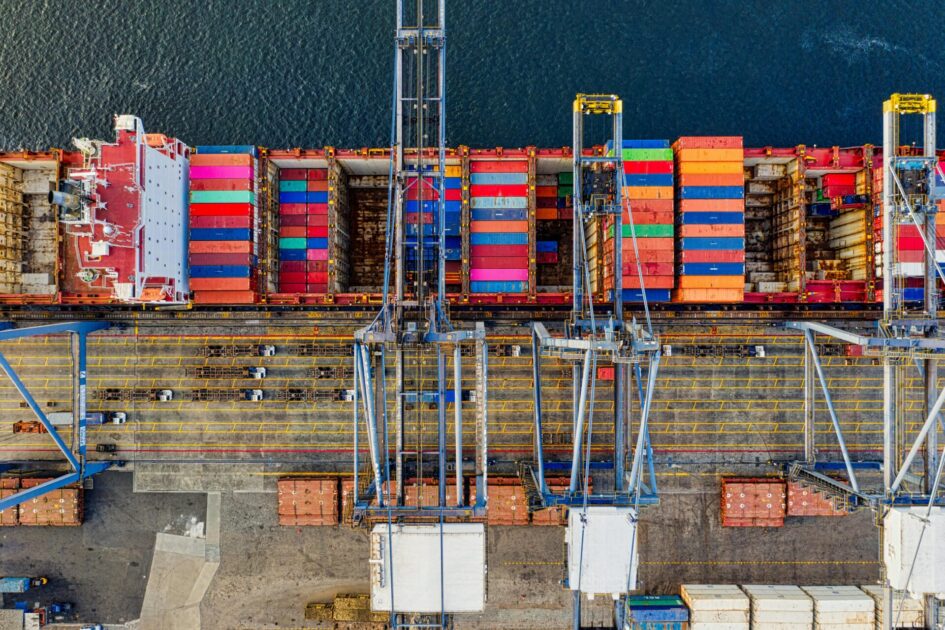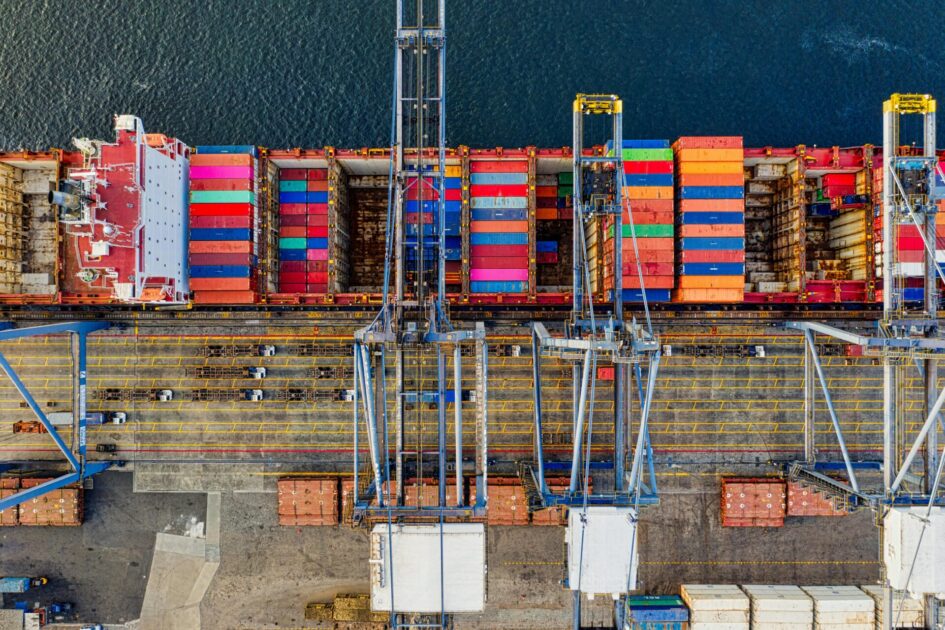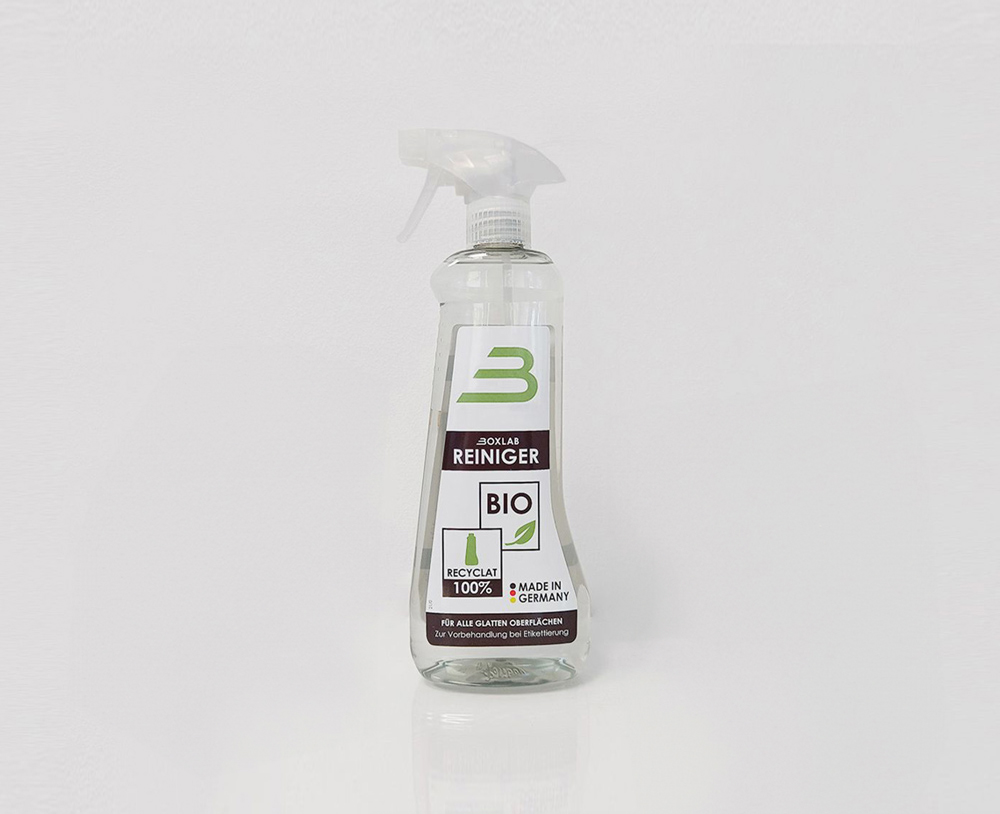Date:
April 19, 2024
Categories:
Placards, Products, Sustainibility,
More than 90,000 transport ships on the world’s oceans play a crucial role in handling over 80% of global trade. The container is one of the most important innovations for international trade. It is estimated that between 25 and 40 million containers are in use worldwide. Despite all precautions, some of them are lost due to carelessness or the harsh conditions at sea. But what happens to these lost containers?
The reasons
The correct packing, stowing and securing of freight containers and the accurate declaration of their weight is not only an art form, but also a technical challenge in itself. These processes are critical to the safety of container ships, their crew, cargo, harbour workers and the environment. Even if the cargo has been properly stowed in the container, the weight has been taken into account during stacking and everything has been expertly secured, there are numerous potentially critical factors to consider. These include storms and rough seas, human error, stack collapse and rare but devastating events such as collisions or running aground on reefs.

Die EU-Kommission schlägt einen planbaren und realistischen Weg zu schadstofffreien Fahrzeugen vor, um die Gesundheit der Bürgerinnen und Bürger, sowie die Umwelt zu schützen. Gleichzeitig soll Europas Automobilindustrie wettbewerbsfähig bleiben. Ziel ist es, den Ausstoß von Stickoxiden (NOX) bei Bussen und Lkw um 56 Prozent zu drücken. Beim Feinstaub (aus dem Auspuff, nicht von Bremsen oder Reifen) sollen es 39 Prozent weniger sein. EU-Staaten und Europaparlament müssen noch über das Vorhaben verhandeln und sich auf eine gemeinsame Linie verständigen. Es ist derzeit vorgesehen, dass die Regeln für Pkw 2025, beziehungsweise für Lkw und Busse 2027 in Kraft treten sollen.
How many go overboard every year?
Over a period of nine years, the World Shipping Council endeavoured to determine reliable data on the loss of containers in a research project. Between 2008 and 2016, the average annual loss was 568 containers. However, this figure did not take into account catastrophic events such as shipwrecks or groundings, such as the „Rena“ off New Zealand in 2011, the „MOL Comfort“ in the Indian Ocean in 2013 or the „El Faro“ off Puerto Rico in 2015. Including such events, the number of containers lost on the world’s oceans quickly adds up to 1,582. But even apart from such tragic incidents, even a strong sea storm can throw containers overboard. A notable example of this is the incident involving the freighter „MSC Zoe“ in the North Sea at the beginning of 2019, one of the largest container ships in the world with a length of over 394 metres and a load capacity of 19,000 standard containers, in which a total of 345 containers were lost. The images of televisions, dolls and sandals washed up on Dutch beaches went around the world. But 345 containers is not a lot: the „Maersk Essen“ lost 750 containers in the Pacific in January 2021, its sister ship, the „Eindhoven“, lost 260 a month later, and the „ONE Apus“ even lost an incredible 1,800 containers in December 2020.
However, this was only a fraction of the loss compared to 2013, when the largest container loss to date was recorded as part of a shipping accident. At that time, a storm broke out in the Arabian Sea. Dents formed on the hull of the ship „MOL Comfort“, which was also more than 300 metres long, and then a kink appeared. Finally, the ship broke into two parts, which drifted away from each other at around two knots and after some time were 35 kilometres apart. The rear half of the ship sank after ten days, while the front half followed almost two weeks later.
Who bears the responsibility?
In principle, responsibility for the transport of goods lies with the respective shipping company. These companies are covered by liability insurance for loss or damage to the goods. However, the shipping company’s liability is usually limited to a certain amount per kilogramme of the cargo weight or packaging unit, which means that the client is often not reimbursed for the entire loss. These damages occur when the container is damaged or lost. It is therefore advisable for clients to insure themselves against these risks by taking out transport insurance. Transport insurance not only covers damage or loss to the goods up to the insured value, but also takes effect in the event of „general average“.
General average
If a ship with cargo is in distress at sea, it is the duty of the captain to do everything possible to save it. In such cases, the so-called general average occurs. This is defined as when, due to exceptional circumstances, damage or costs are deliberately accepted in order to save the crew, ship and cargo from a common danger. For example, the captain may order certain containers to be thrown overboard, cargo holds to be flooded in the event of fire or the ship to be deliberately beached. In addition, environmental damage or claims for compensation from third parties may arise due to consequential damage. These costs are apportioned in proportion to the contribution values of the ship, cargo and freight charges and must be borne by the respective contributors.
Flotsam on the high seas
As soon as containers enter the water, most of them quickly sink to the bottom of the sea. However, depending on their cargo, some can float on the surface for days or weeks before sinking. Refrigerated containers can remain on the surface even longer due to their buoyant insulation. One notable example is a container that washed up on the south coast of the UK only eleven months after it disappeared off the coast of France in the Atlantic.
A Swiss marine biologist estimates that at least 12,000 standard containers are floating in the world’s oceans. This figure is worrying, as these hard-to-recognise UFOs („Unidentified Floating Objects“) pose a significant risk of accidents for smaller vessels such as yachts and fishing boats. In fact, the risk of collision is high, as the containers drifting just below the surface are only visible with difficulty and late in normal waves. Even the ship’s radar is of little help in this respect, as it only detects large objects above the surface of the water. There are frequent reports of collisions and damaged yachts that have to be rescued. In particularly serious cases, some of these boats even sink.
Flotsam on the beach - What now?
The legal situation varies around the world. In the Netherlands, for example, it is not a criminal offence to take washed-up goods as long as closed containers are not opened. If, on the other hand, containers or their contents had reached German beaches, it would have been illegal to keep the beach goods due to „misappropriation“.
What about the environment?
In addition to the dangerous hazardous goods containers, there are also concerns about the thousands of tonnes of plastic that end up in the sea in this way. In addition to plastic products and packaging, large quantities are transported in the form of small pellets known as „nurdles“. They serve as the basic material for most plastic products and are only a few millimetres in size. If these small pieces end up in the sea, they float on the surface of the water and sooner or later drift ashore. There, at the latest, they are seen as food and eaten by birds and small animals. It is therefore important to clean the beaches of the pellets. The cleaning of the beaches is financed by the ship insurers, but the real problem is the discovery of the small pieces – as the pellets are not considered dangerous cargo, the loss of a container carrying them does not have to be reported separately.
Dangerous goods overboard
After a freighter was damaged in the North Sea, numerous containers fell overboard, including some containing hazardous goods. At least one of these containers is said to contain the hazardous substance dibenzoyl peroxide, which is used in synthetic resins and adhesives, among other things.
Dibenzoyl peroxide is a crystalline powder that appears colourless to white and has an unstable nature as an organic peroxide. This dust-like substance reacts explosively with air and can interact violently to explosively with many other compounds, which can lead to fire hazards. It is advisable to cordon off the danger zone if the substance is released. Dibenzoyl peroxide is regulated by the Explosives Act in Annex II, substance group B, No. 3.
It is insoluble in water and tends to sink in water. According to the Ordinance on Installations for the Handling of Substances Hazardous to Water (AwSV), it is classified as slightly hazardous to water (water hazard class 1). In addition, dibenzoyl peroxide is classified as a hazardous substance according to the CLP Regulation (EC 1272/2009), which can cause severe eye irritation and allergic skin reactions.
The authorities have therefore issued a warning for the North Sea island of Borkum: Citizens should not touch containers that have washed ashore and should notify the authorities immediately.
Unfortunately, this is just one of many examples of hazardous goods that end up in the oceans year after year.
The right labelling
Considering that containers can often float on the world’s oceans for weeks at a time, seawater-resistant labelling is crucial, especially for the transport of hazardous goods. This marking makes it possible to identify the type of cargo even after a long time in the water, to take appropriate measures and to help minimise the risk of accidents and protect the environment.
With seawater-certified labelling from Boxlab Services, shipping companies and freight forwarders can ensure that dangerous goods are identified and handled appropriately even after the container may have gone overboard. This is an important step in ensuring both the safety of shipping and the protection of the environment.
Your contact person
Contact us today if you are interested or have any questions about our products.
We are at your disposal.





